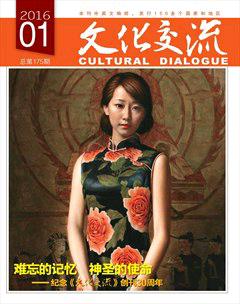The Cultural Highland
By Li Jianbing, Lin Minjun
The Cultural Highland
By Li Jianbing, Lin Minjun
An overview of the ‘cultural center endeavors of Linhai
Feel the Historic Pulse
One of China's most culturally distinct cities, Linhai is also a leader in the country's new countryside reconstruction. The city's ‘cultural centers' are bringing the fragrance of culture into the remotest villages.
Remade from a private school and an adjoining ancestral hall built in 1843, the cultural center of Kongqiu Village is a vignette of the powerful ‘cultural enlightenment' in the rural areas of Linhai. Every detail of the interior décor of this 2,000-m2 sprawl reminds the villagers of the past glory of the village that was called Longzhou in ancient times and tells stories about their ancestors.
At the cultural center in Qili Village, school-children take part in traditional Chinese ‘enlightenment' ceremonies.
To have a taste of the unique farming tradition and tea and citrus culture of Aodiluo, the village's cultural center is the right place to be. Here outmoded farming tools on display allow visitors to time travel back into the life of the ancestors.
A Cultural Landmark
The success of the ‘cultural center' efforts has led to the rejuvenation of a good many folk arts and crafts, awakening the city's ‘village culture' and bringing new vigor and vitality into the cultural landscape of Linhai.
In Gulou Village, the cultural center that is decked out on three floors and has a special zone for the exhibition of the village's farming tradition is the villages' favorite cultural rendezvous. People come here for dance rehearsals, watching shows and keeping themselves updated about the latest cultural goings on in the city.
The cultural centers have also proved an ideal platform for the collection and exhibition of the forgotten folk cultural gems. Various activities such as lectures, painting and calligraphy workshops and tea ceremonies are opening the cultural door to a growing number of rural people. The cultural center in Shangyou Village, Baishuiyang Town plays a key role in the comeback of the ‘yellow sand dragon dance' - one of China's first state-level cultural heritages announced in 2006; and the stilt-walking tradition of Gulou Village can be enjoyed also at the village's cultural center.
The cultural centers have blossomed into a new ‘cultural landmark' in Linhai, as summarized by Chen Ye, director of the History Department of Zhejiang Academy of Social Sciences. “The rural cultural centers are rebuilding a sense of belonging for the rural people.”

大田刘村文化礼堂The facade of the cultural center at Datianliu Village
Quality and Uniqueness
The ‘cultural center' construction of Linhai focuses on quality and uniqueness. Instead of waiting for the city government to bring culture to the countryside, villages are encouraged to make their ‘cultural voices' heard. Chonghe Stage, operated by the city government, has proved a successful platform for such cultural sharing.
The ‘cultural center' of Hengqilu, a fishing village in Shangpan Town, is an ingenious architectural celebration of the village's fishing tradition. The activities at the ‘cultural center' of Shangguan Village in Baishuiyang Town have drawn participation of tens of thousands people.
The cultural cravings of the rural people in Linhai are now satisfied by more than 100 ‘cultural centers' that are contributing to the unique rural cultural prosperity of Linhai and the city's leadership in Zhejiang's new countryside reconstruction endeavors. In times of celebration, the cultural centers serve not only as a brilliant stage for people to indulge in colorful folk activities but also an effective platform for the protection and inheritance of the city's cultural treasures.
- 文化交流的其它文章
- 展现浙江文化繁荣的绚丽画卷——文化大省建设篇
- A Review of the 30 Years of Cultural Dialogue
- 搭建 金桥三十年——中外文化交流篇
- Writing New Chapters for Cultural Prosperity and Playing New Symphony for International Exchanges -In Commemoration of the 30 Years of Cultural Dialogue
- Lu Yanshao: Master of Traditional Chinese Landscape
- Great Achievements

